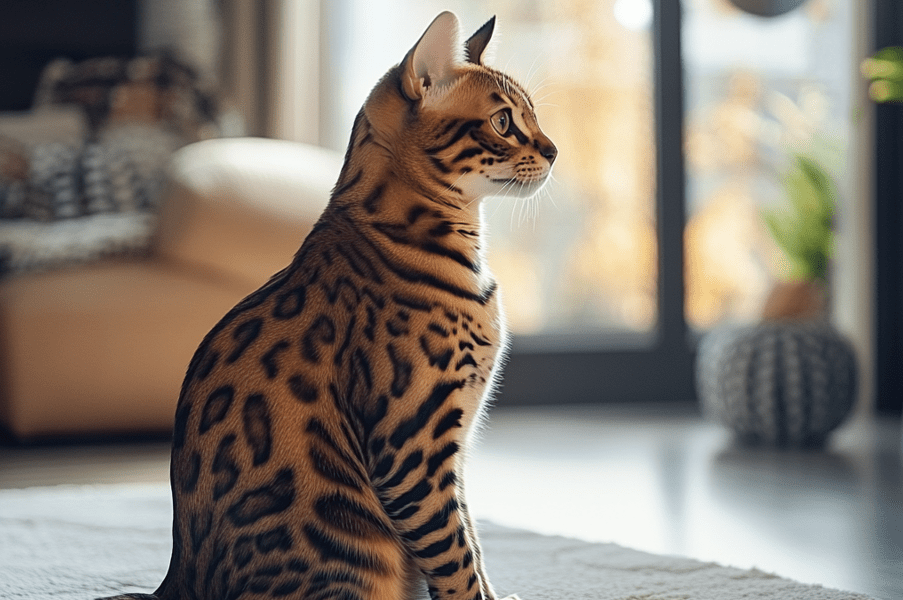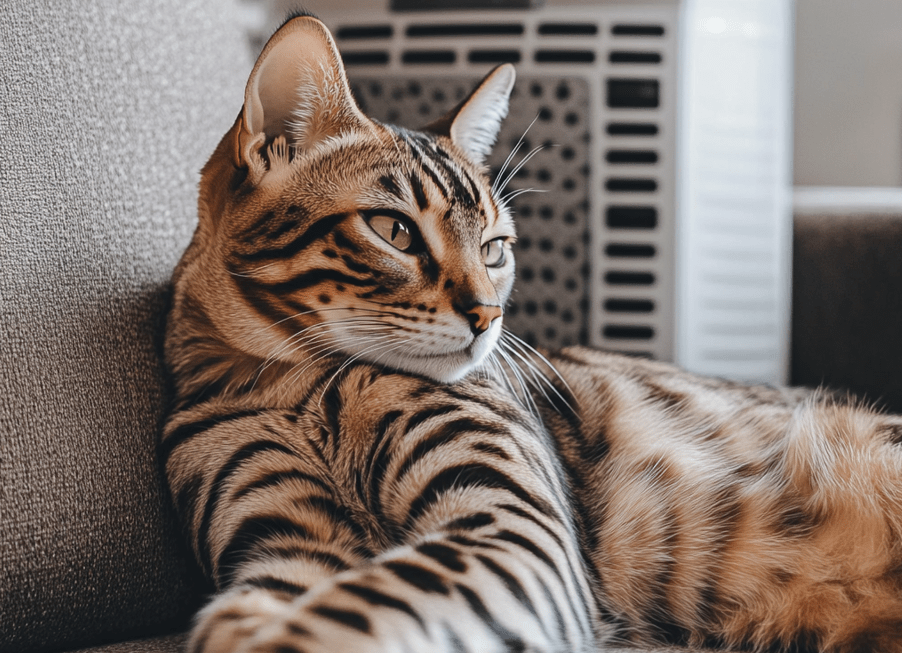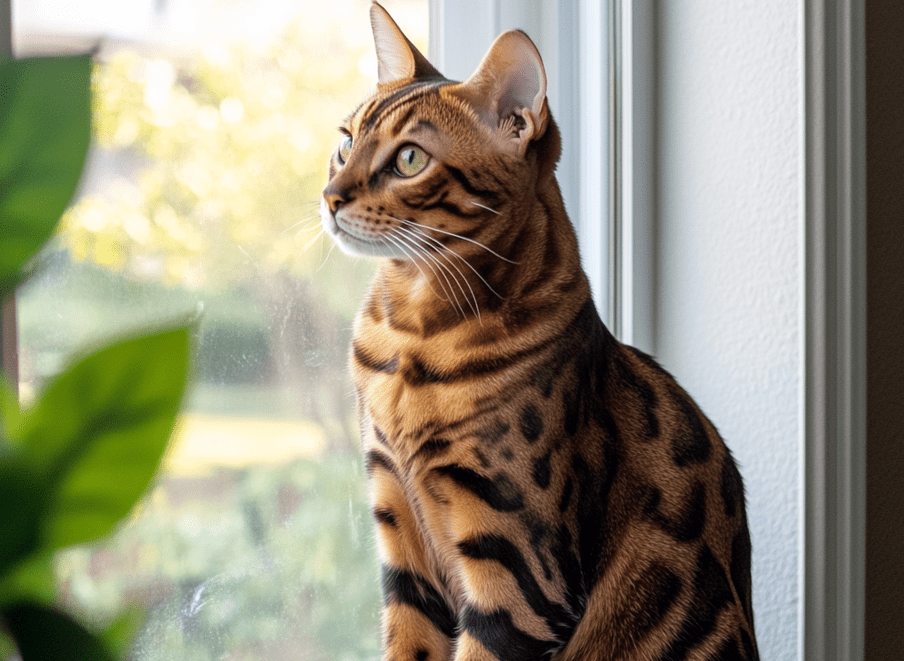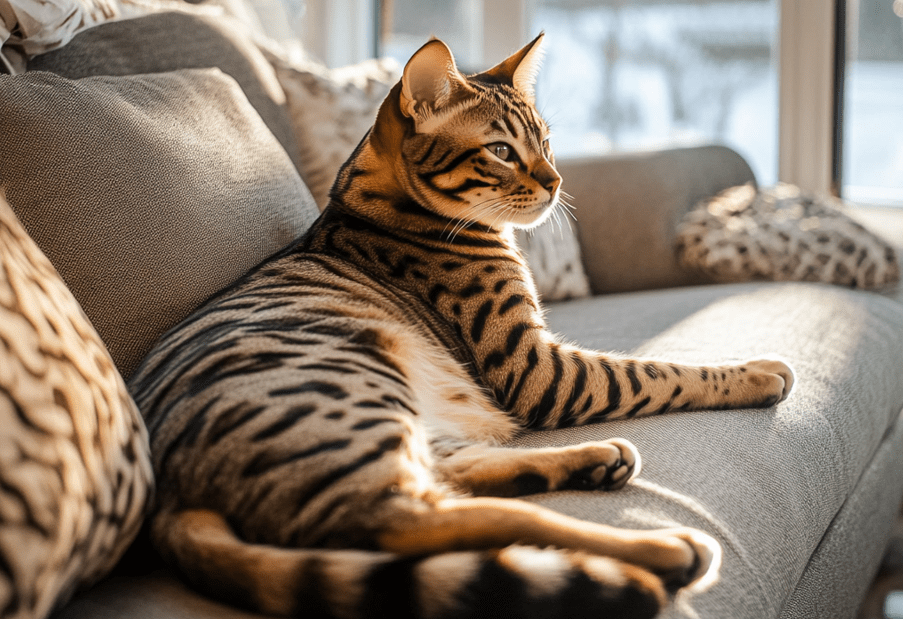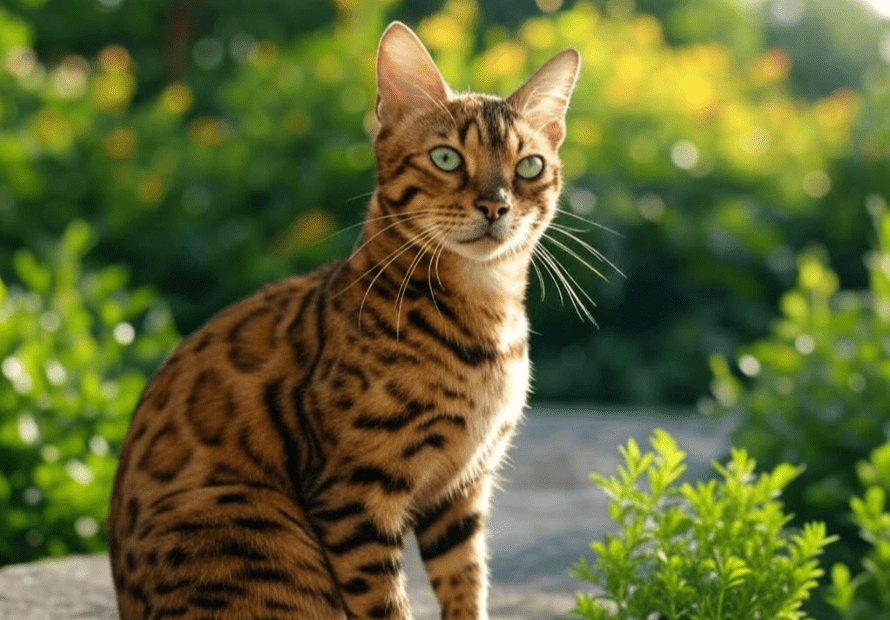
Bengal cats are renowned for their stunning, leopard-like coats that shimmer with a glossy, luxurious sheen. Their unique fur, often described as “glittered” due to its radiant appearance, is a hallmark of the breed. However, maintaining a Bengal cat’s coat in top condition requires dedicated care, from proper grooming to a balanced diet. In this comprehensive guide, we’ll explore everything you need to know about Bengal cat coat care, offering practical tips, expert insights, and actionable advice to ensure your feline’s fur remains shiny, healthy, and vibrant.
Understanding the Bengal Cat’s Unique Coat
The Bengal cat’s coat is unlike that of most other breeds. Its short, dense fur is soft to the touch and often features a distinctive pattern of spots, rosettes, or marbling. The coat’s “glitter” effect—caused by translucent hair shafts that reflect light—gives Bengals their signature sparkle. While their fur is low-shedding compared to other breeds, proper care is essential to prevent matting, dullness, or skin issues.
Characteristics of a Healthy Bengal Coat
A healthy Bengal cat’s coat should exhibit the following traits:
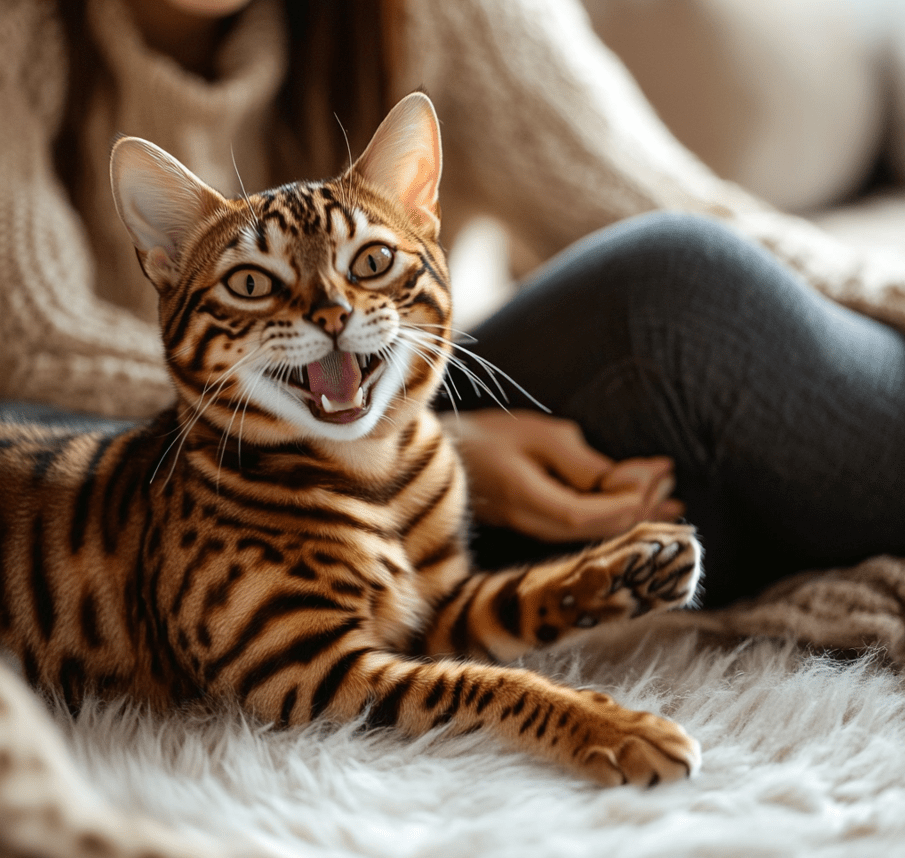
Glossy Sheen: The fur reflects light, giving it a polished, radiant look.
Smooth Texture: The coat feels soft and silky, with no rough or dry patches.
Vivid Patterns: Spots or rosettes are well-defined, with no fading or discoloration.
Minimal Shedding: While Bengals shed lightly, excessive shedding may indicate a problem.
Healthy Skin: The skin beneath the fur is free of redness, flakes, or irritation.
Why Bengal Cat Coat Care Matters
A Bengal’s coat is a reflection of their overall health. Dull, patchy, or greasy fur can signal underlying issues like poor nutrition, stress, or skin conditions. Regular coat care not only enhances your cat’s appearance but also promotes their well-being by:
- Preventing skin infections or parasites.
- Reducing hairballs through proper grooming.
- Strengthening the bond between you and your Bengal through interactive care routines.
- Maintaining their confidence and comfort, as Bengals are known for their proud, regal demeanor.
Neglecting coat care can lead to matting, excessive shedding, or discomfort, which may affect your Bengal’s quality of life. Let’s dive into the best practices for keeping their coat in pristine condition.
Essential Bengal Cat Coat Care Practices
To maintain your Bengal cat’s shiny, healthy coat, follow these key practices: grooming, nutrition, environmental care, and regular health checkups.
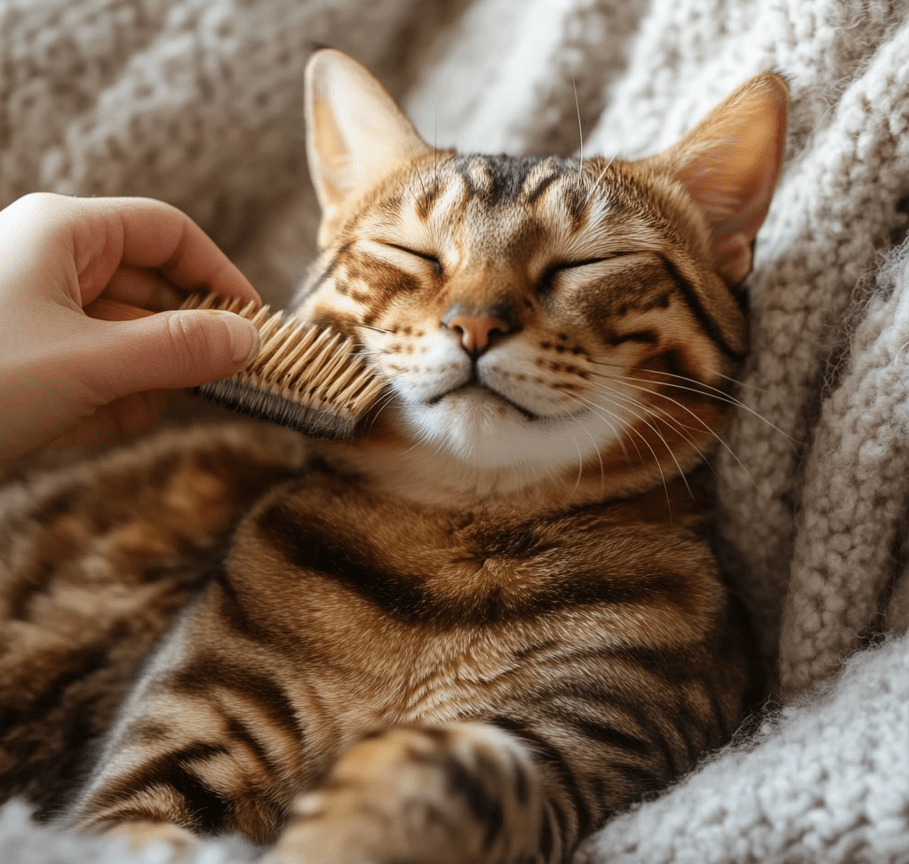
1. Grooming: The Foundation of Coat Care
Grooming is the cornerstone of Bengal cat coat care. While Bengals are low-maintenance compared to long-haired breeds, regular grooming enhances their coat’s natural beauty and prevents issues.
Brushing Your Bengal Cat
Brushing removes loose hair, distributes natural oils, and stimulates the skin, all of which contribute to a glossy coat.
- Frequency: Brush your Bengal 1-2 times per week. Increase to 3 times during shedding seasons (spring and fall).
- Tools:
- Soft Bristle Brush: Ideal for distributing oils and smoothing the coat.
- Rubber Grooming Mitt: Great for massaging the skin and removing loose fur.
- Fine-Tooth Comb: Useful for checking for fleas or debris.
- Technique:
- Brush in the direction of hair growth to avoid discomfort.
- Focus on areas prone to matting, like the belly and behind the ears.
- Be gentle to maintain your Bengal’s trust.
Bathing Your Bengal Cat
Unlike most cats, Bengals often tolerate or even enjoy water, thanks to their wild ancestry. Bathing can enhance coat shine and remove excess oils or dirt.
- Frequency: Bathe your Bengal every 6-8 weeks, or as needed (e.g., after outdoor adventures).
- Shampoo:
- Use a cat-specific shampoo with natural ingredients like oatmeal or aloe vera.
- Avoid human shampoos, which can strip natural oils and cause irritation.
- Steps:
- Fill a sink or tub with lukewarm water.
- Gently wet your Bengal’s coat, avoiding the face.
- Apply shampoo, lather, and rinse thoroughly.
- Dry with a soft towel or low-heat blow dryer (if your cat is comfortable).
Checking for Parasites
Fleas, ticks, and mites can damage your Bengal’s coat and skin. Regularly inspect their fur, especially if they spend time outdoors.
- Signs of Parasites:
- Excessive scratching or grooming.
- Red, irritated skin.
- Visible fleas or black specks (flea dirt).
- Prevention:
- Use vet-recommended flea and tick preventatives year-round.
- Comb through the coat weekly to catch issues early.
2. Nutrition: Fueling a Healthy Coat from Within
A Bengal cat’s coat reflects their diet. Nutrient deficiencies can lead to dull, brittle fur or excessive shedding, while a balanced diet promotes a glossy, vibrant coat.
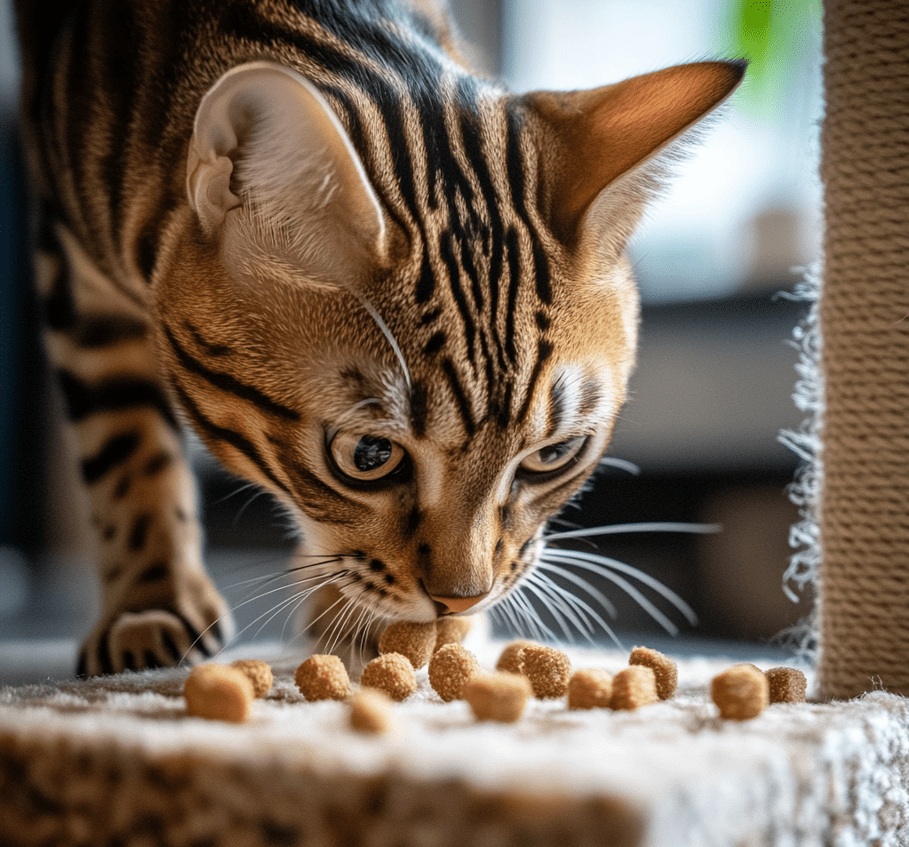
Key Nutrients for Coat Health
High-Quality Protein: As obligate carnivores, Bengals need animal-based proteins (e.g., chicken, turkey, fish) to support hair growth and strength.
Omega-3 and Omega-6 Fatty Acids: These healthy fats reduce inflammation, hydrate the skin, and enhance coat shine. Sources include fish oil and salmon.
Biotin and B Vitamins: Support hair follicle health and prevent dryness.
Zinc and Copper: Promote vibrant coat color and prevent fading.
Hydration: Adequate water intake keeps skin supple and prevents flaking.
Best Foods for Bengal Cat Coat Care
Wet Food: High in moisture and protein, wet food supports hydration and coat health. Look for brands like Wellness Core or Tiki Cat with named meat sources.
Raw Diets: Biologically appropriate raw foods (e.g., Stella & Chewy’s) mimic a wild cat’s diet, providing natural nutrients for a shiny coat.
Dry Food: If used, choose grain-free, high-protein options like Orijen or Acana, but prioritize wet food for hydration.
Supplements:
Fish Oil: Adds omega-3s for coat shine (consult your vet for dosage).
Probiotics: Support gut health, which indirectly improves skin and coat.
Tips:
- Avoid foods with fillers (e.g., corn, soy) or artificial additives, which can cause allergies or dull fur.
- Transition to new foods gradually over 7-10 days to prevent digestive upset.
- Ensure fresh water is always available, ideally in a cat fountain, as Bengals prefer running water.
Feeding Guidelines
- Feed adult Bengals 2-3 small meals daily, based on their weight and activity level (approximately 20-30 calories per pound).
- Monitor portion sizes to prevent obesity, which can lead to greasy or patchy fur.
- Consult a veterinarian for personalized diet recommendations, especially if your Bengal has skin sensitivities.
3. Environmental Factors: Protecting the Coat
Your Bengal’s environment plays a significant role in coat health. Dry air, allergens, and stress can all affect their fur’s appearance.
Managing Dryness
Humidifiers: Indoor heating or air conditioning can dry out your Bengal’s skin and coat. Use a humidifier to maintain 40-50% humidity.
Hydration Stations: Place multiple water bowls or a fountain around your home to encourage drinking.
Reducing Allergens
Clean Bedding: Wash your Bengal’s bedding weekly to remove dust, dander, and allergens.
Vacuum Regularly: Keep your home free of dust and pollen, which can irritate your cat’s skin.
Hypoallergenic Products: Use unscented, cat-safe cleaning products to avoid allergic reactions.
Minimizing Stress
Bengals are sensitive to changes in their environment, and stress can lead to over-grooming or dull fur. To keep your Bengal relaxed:
- Provide plenty of enrichment, like cat trees, toys, and puzzle feeders.
- Maintain a consistent routine for feeding and playtime.
- Offer a quiet space for retreat during loud events (e.g., guests or storms).
4. Regular Health Checkups: Catching Issues Early
A shiny coat starts with a healthy body. Regular veterinary visits help identify and address issues that affect your Bengal’s fur.
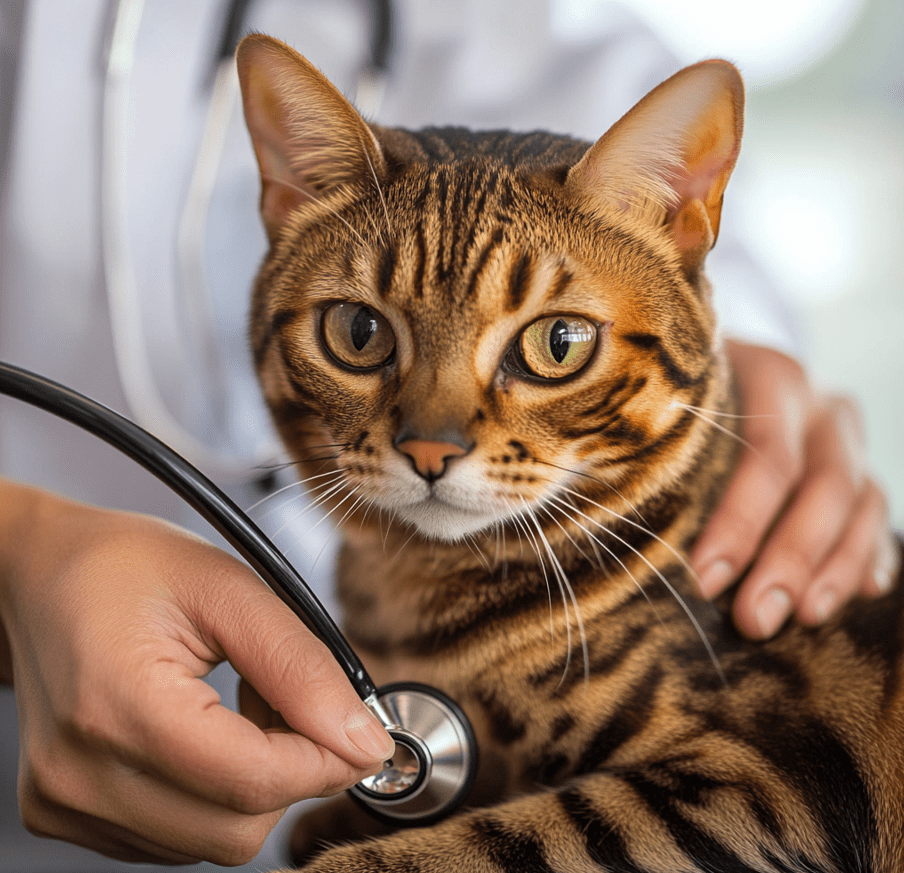
Common Coat-Related Health Issues
Allergies: Food or environmental allergies can cause itching, redness, or hair loss. Your vet may recommend a hypoallergenic diet or medication.
Skin Infections: Bacterial or fungal infections can lead to scaly or greasy fur. Prompt treatment is essential.
Hormonal Imbalances: Conditions like hyperthyroidism can cause coat changes. Blood tests can diagnose these issues.
Parasites: Fleas, mites, or ringworm can damage the coat. Regular preventatives minimize risk.
Veterinary Care Tips
- Schedule annual checkups, or biannual for senior Bengals (7+ years).
- Discuss any changes in your cat’s coat, like dullness, thinning, or excessive shedding.
- Keep vaccinations and parasite preventatives up to date.
Special Considerations for Bengal Cat Coat Care
Bengals have unique traits that influence their coat care needs. Here’s how to tailor your approach:
1. Seasonal Shedding
While Bengals shed minimally, they may experience light shedding in spring and fall. Increase brushing during these periods to remove loose fur and prevent hairballs.
2. Sensitive Skin
Some Bengals are prone to skin sensitivities, leading to itching or flaky skin. Use gentle grooming tools and hypoallergenic products to avoid irritation.
3. Age-Specific Care
Kittens: Bengal kittens have softer, fluffier coats that require gentle brushing to avoid discomfort.
Adults: Focus on maintaining shine and preventing obesity, which can affect coat quality.
Seniors: Older Bengals may have thinner fur. Support their coat with nutrient-rich diets and supplements.
4. Indoor vs. Outdoor Bengals
Indoor Bengals: Protected from dirt and parasites but may face dry air or boredom-related over-grooming.
Outdoor Bengals: Require more frequent flea checks and bathing to remove dirt or pollen.
Common Mistakes to Avoid in Bengal Cat Coat Care
Over-Bathing: Excessive bathing strips natural oils, leading to dryness. Stick to a 6-8 week schedule.
Using Human Products: Human shampoos or conditioners can irritate your Bengal’s skin.
Neglecting Nutrition: Poor diet is a leading cause of dull coats. Prioritize high-quality, protein-rich food.
Ignoring Skin Issues: Scratching or bald patches require veterinary attention, not just grooming.
Skipping Grooming: Even low-shedding Bengals need regular brushing to maintain coat health.
DIY Coat Care Recipes for Bengals
For owners who love a hands-on approach, here are two vet-approved, cat-safe DIY recipes to enhance your Bengal’s coat:
1. Oatmeal Bath Soak
Soothes dry skin and adds shine.
Ingredients: 1 cup plain, unflavored oatmeal (finely ground), 4 cups warm water.
Instructions:
-
- Blend oatmeal into a fine powder.
- Mix with warm water to create a milky solution.
- Gently massage into your Bengal’s coat during a bath, avoiding the face.
- Rinse thoroughly and towel dry.
2. Coconut Oil Paw Balm
Hydrates skin and softens fur (use sparingly).
Ingredients: 1 tbsp organic coconut oil, melted.
Instructions:
-
- Apply a tiny amount to your Bengal’s paw pads or dry skin patches.
- Massage gently and wipe off excess to prevent ingestion.
- Use once weekly for hydration.
Caution: Always test DIY products on a small area first and consult your vet before use.
Enhancing Your Bengal’s Coat Through Play
Bengals are highly active, and regular exercise supports coat health by reducing stress and improving circulation. Try these activities:
- Chase games with feather wands or laser pointers.
- Interactive toys like puzzle feeders to stimulate their mind.
- Outdoor enclosures (if safe) for exploration, which can enhance their coat’s natural glow.
Aim for 20-30 minutes of play daily to keep your Bengal fit and relaxed.
When to Seek Professional Help
If your Bengal’s coat shows persistent issues despite proper care, consult a veterinarian or feline dermatologist. Signs to watch for:
- Bald patches or thinning fur.
- Excessive scratching or grooming.
- Greasy, odorous, or flaky skin.
- Changes in coat color or texture.
A professional can diagnose underlying issues like allergies, infections, or nutritional deficiencies and recommend targeted treatments.
Conclusion

Keeping your Bengal cat’s coat shiny and healthy is a rewarding journey that combines grooming, nutrition, and attentive care. By brushing regularly, feeding a nutrient-rich diet, maintaining a clean environment, and monitoring their health, you can ensure your Bengal’s fur remains a stunning showcase of their wild beauty. Avoid common pitfalls like over-bathing or poor-quality food, and embrace your Bengal’s love for play to enhance their overall well-being.
With these expert tips and a commitment to consistent care, your Bengal cat will strut their glossy, glittered coat with confidence, turning heads wherever they go. Start implementing these strategies today, and watch your feline friend shine brighter than ever.

